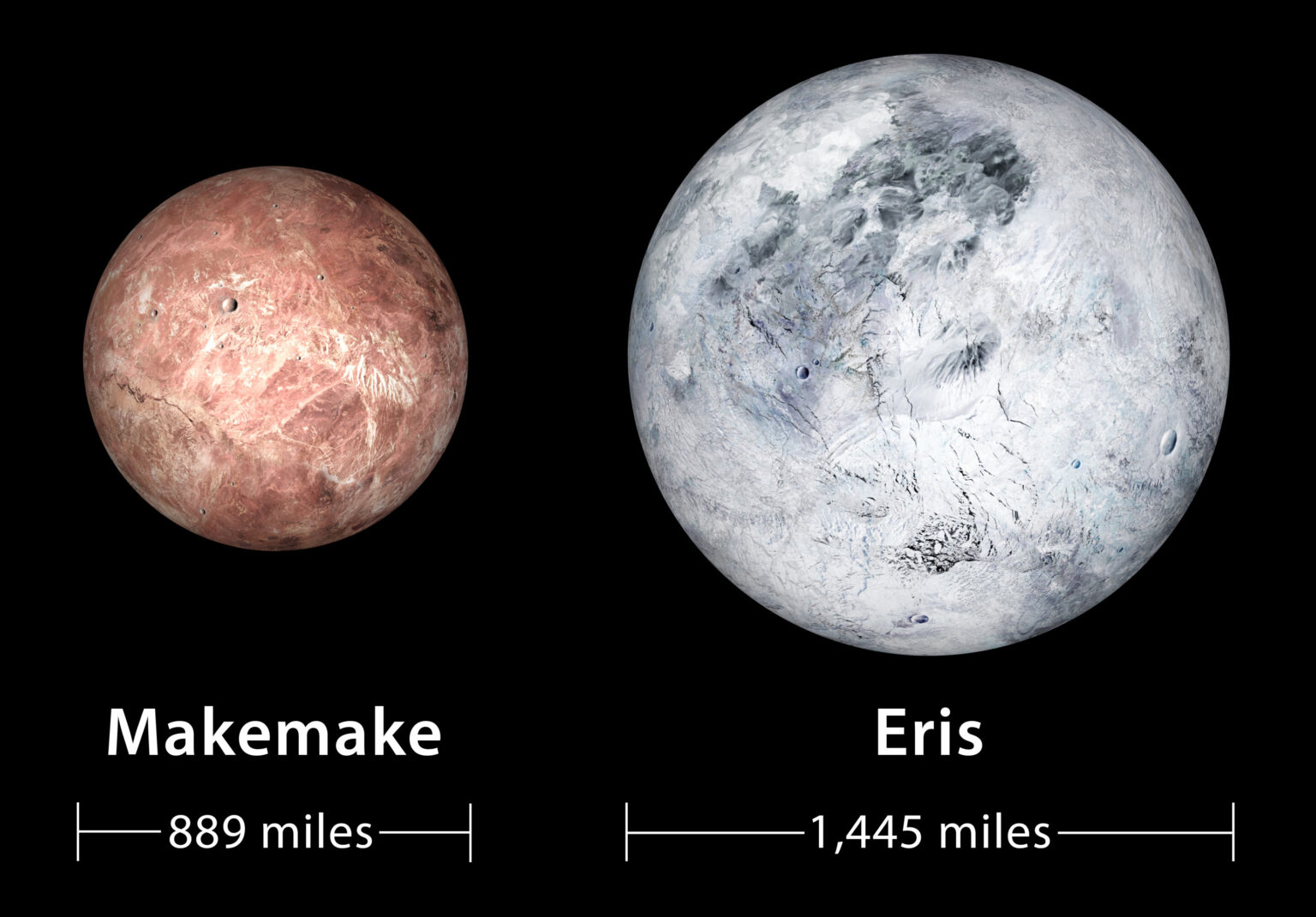Researchers report that they have found signs of the presence of geothermal activity on the dwarf planets Eris and Makemake. This is evidenced by the ratio of hydrogen to deuterium in the composition of methane. Scientists suspect that oceans of liquid water may be hiding under the surface of these worlds.

Dwarf planets Eris and Makemake
A team of researchers led by scientists from the Southwestern Research Institute of the USA has made an interesting discovery. They found evidence of hydrothermal or metamorphic activity within the icy dwarf planets Eris and Makemake.
These celestial bodies are located in the Kuiper Belt beyond the orbit of Pluto and mainly consist of frozen gases and water ice. These bodies are quite small. Eris is about the same as Pluto, that is, smaller than the Earth’s Moon, and Makemake is comparable to Charon, that is, half its size.
It has long been known about both dwarf planets that organic matter is present there, at least in the form of the simplest methane compound. But scientists had no confidence about how it was formed until recently. Here the James Webb Space Telescope came to their help.
What does methane mean?
Methane is a molecule that consists of one carbon atom and four hydrogen atoms. However, the latter can be represented by both an ordinary single-proton isotope and a heavy one — deuterium. And by their ratio, scientists can determine whether the substance was formed together with the solar system or whether it survived a later warming up.
So, the analysis carried out by James Webb instruments showed that the ratio of hydrogen and deuterium in Eris and Makemake methane was average. This means that it is not primitive, but it was formed as a result of geochemical activity. That is, somewhere in the depths of the planets, at least in the past, there was a powerful source of heat, which allowed this substance to form.
And this opens the door to an interesting opportunity. The heat that allowed the methane to form could also melt the ice. This means that an ocean of liquid water could have existed under the surface of ice dwarfs in the past. And perhaps it still exists.
In general, scientists’ ideas about Kuiper belt objects have undergone significant changes over the past two decades. Previously, everyone believed that ice dwarfs were relics of the formation of the Solar System and that they had remained unchanged for billions of years.
However, since the New Horizons probe flew past Pluto, scientists are increasingly convinced that dwarf planets have continued to evolve all this time. They are cold, but still alive, and it is quite possible that some organisms may exist in their oceans.
According to phys.org
Follow us on Twitter to get the most interesting space news in time
https://twitter.comne/ust_magazine


